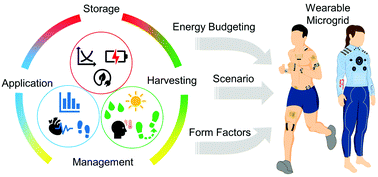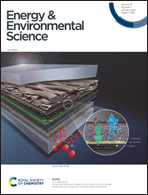Designing wearable microgrids: towards autonomous sustainable on-body energy management
Abstract
The rapid development of wearable sensing and interfacing electronics is facing challenges in sustainability and energy independence. The reliable and sustainable operation of such autonomous wearable electronics hinges on the rational integration of energy harvesting and storage modules, as well as their corresponding control and regulation circuitries. Such emerging self-powered wearable systems still lack systematic system-level energy management considerations and are thus limited in efficiency, reliability, and practicality for their targeted use cases. Viewing the scattered wearable energy technologies through the concept of independent microgrids allows us to reassess the goal of establishing a reliable, practical, and energy-economical wearable system. Powered by distributed on-body energy harvesting modules, the continuous operation of wearable devices can thus be realized with their strategic integration with energy storage managed by the decentralized, hierarchical control system. This Perspective discusses the vision of a wearable microgrid, based on a judicious scenario-specific selection of harvesting and storage modules, with commensurate performance, towards the rational design of practical wearable electronic systems with high energy autonomy and reliability. The energy supply via different sources and power demands of various wearable applications are examined for determining appropriate energy reserves, attainable functionalities, and suitable operation modes, along with key considerations in device form-factors for maximizing system efficiency. By applying the concept of a microgrid on miniaturized self-powered systems for wearables, we propose three system-level design guidelines – commensurate energy rating, complimentary device characteristics, and compatible form factors – towards the future development of reliable, self-sustainable on-body systems and their extension to autonomous implantable, ingestible, or small mobile devices. We conclude by discussing the prospects for developing more efficient and sustainable wearable microgrids for higher power applications, through accurate and smart energy budgeting and regulation involving artificial intelligence and advanced algorithms towards dynamic data-driven prediction of rapidly changing power supply and demands.



 Please wait while we load your content...
Please wait while we load your content...